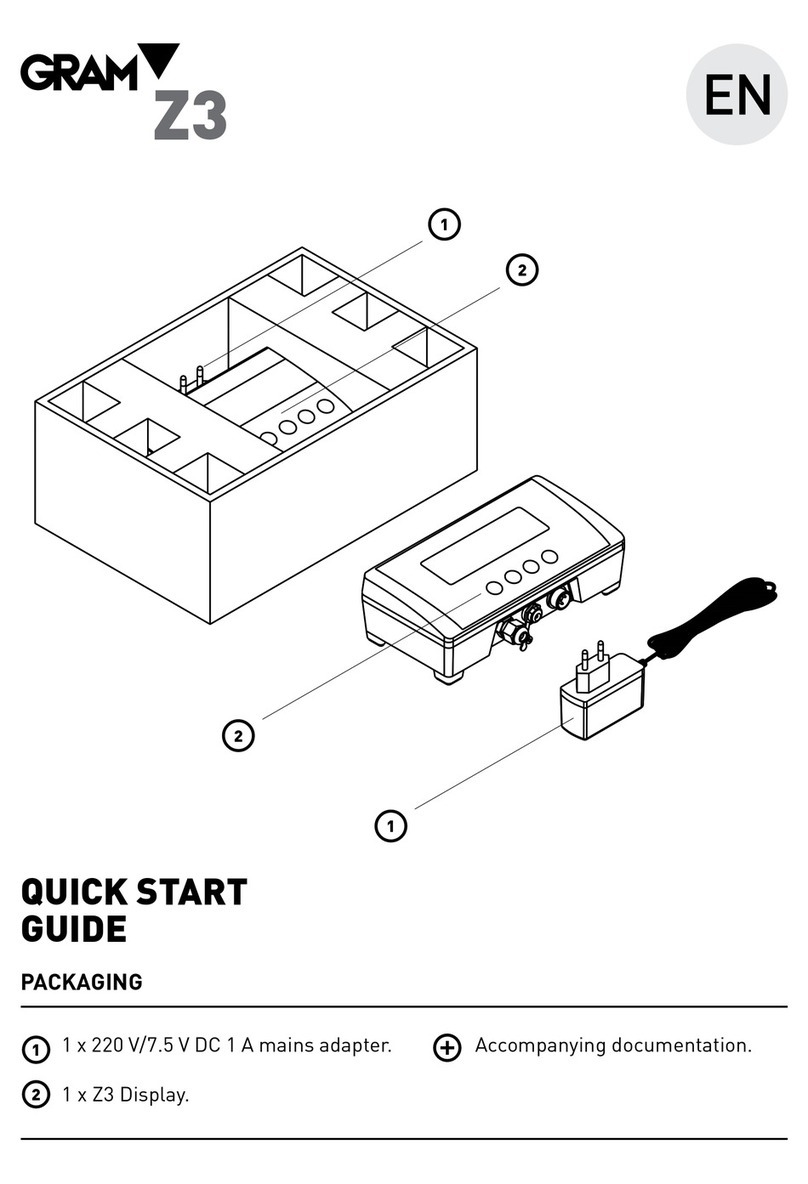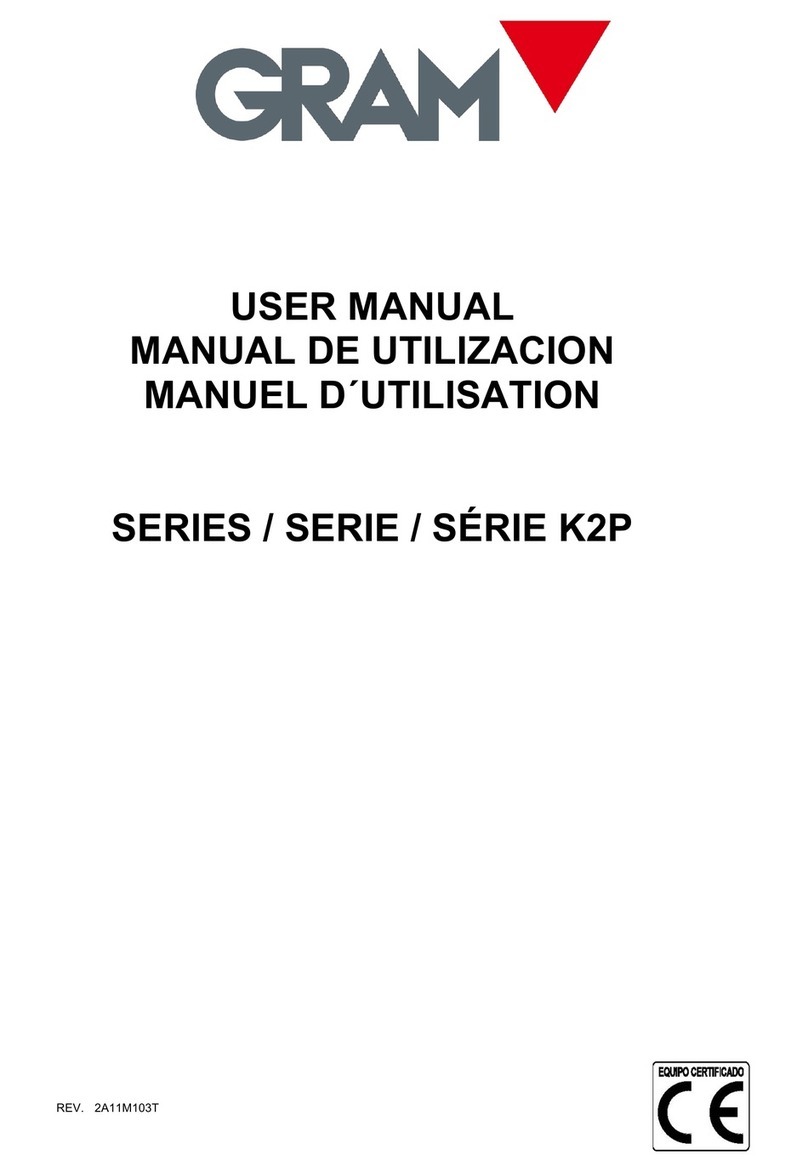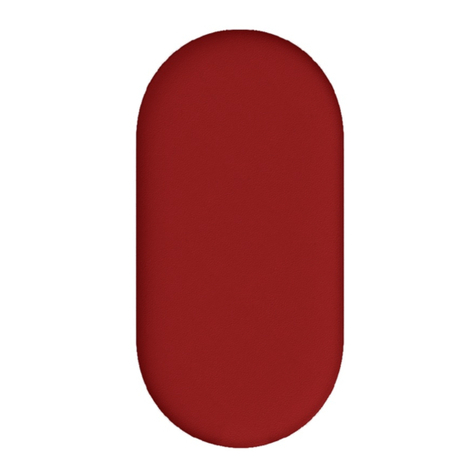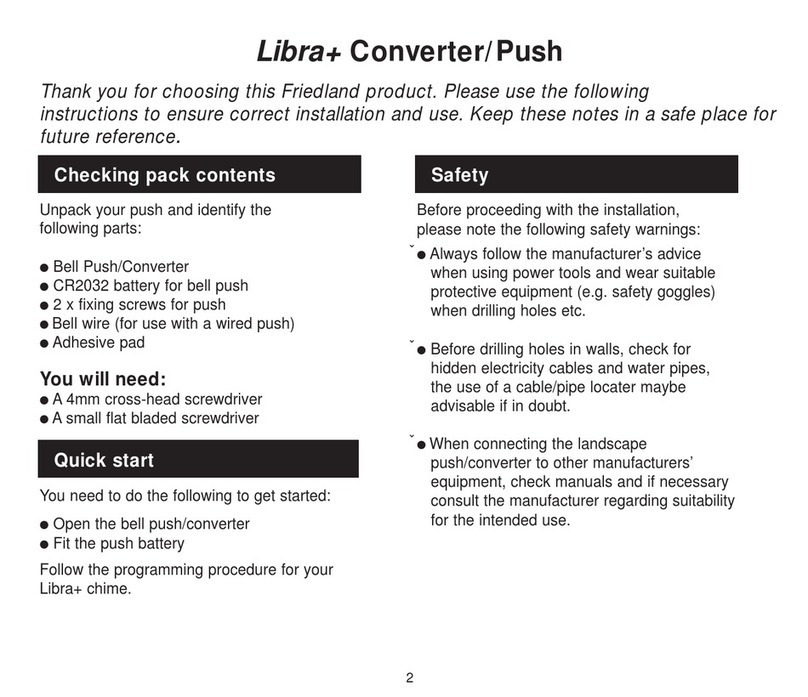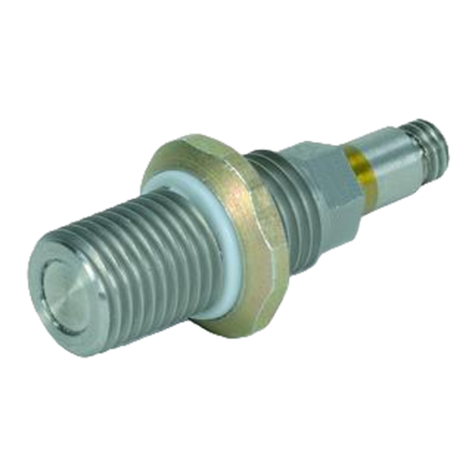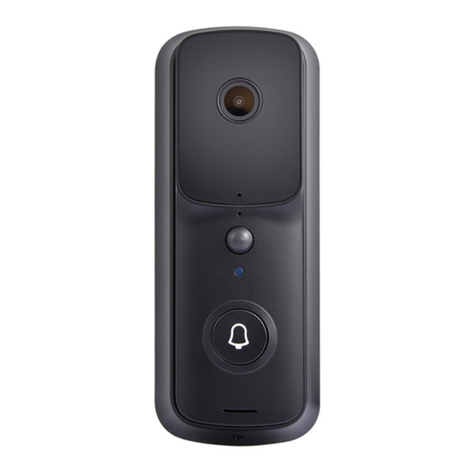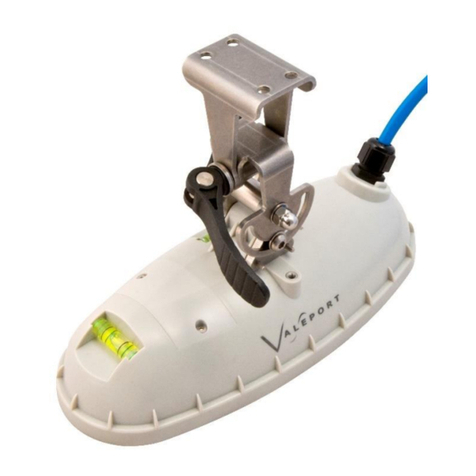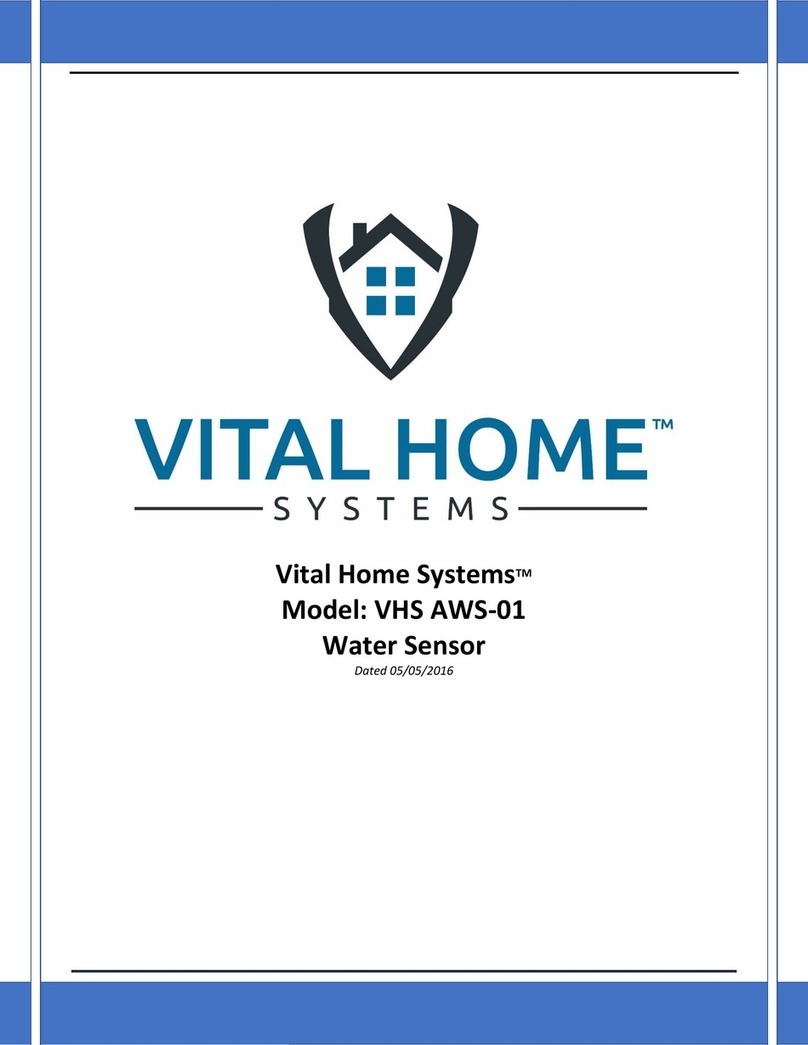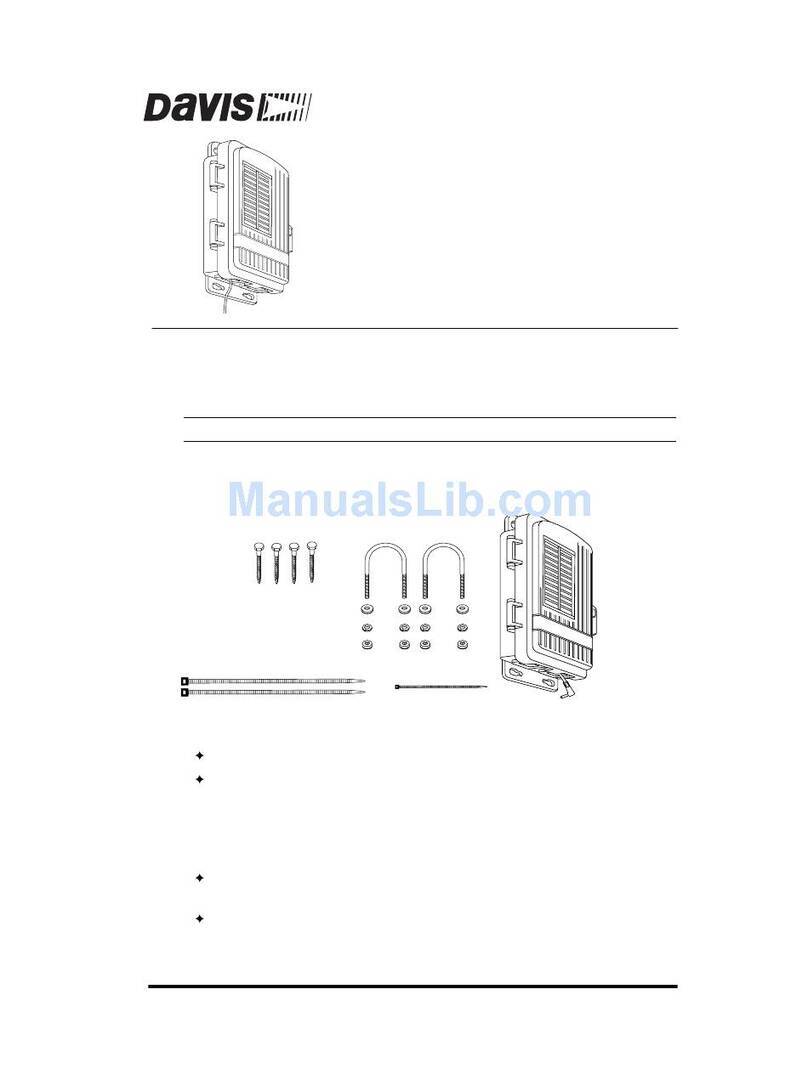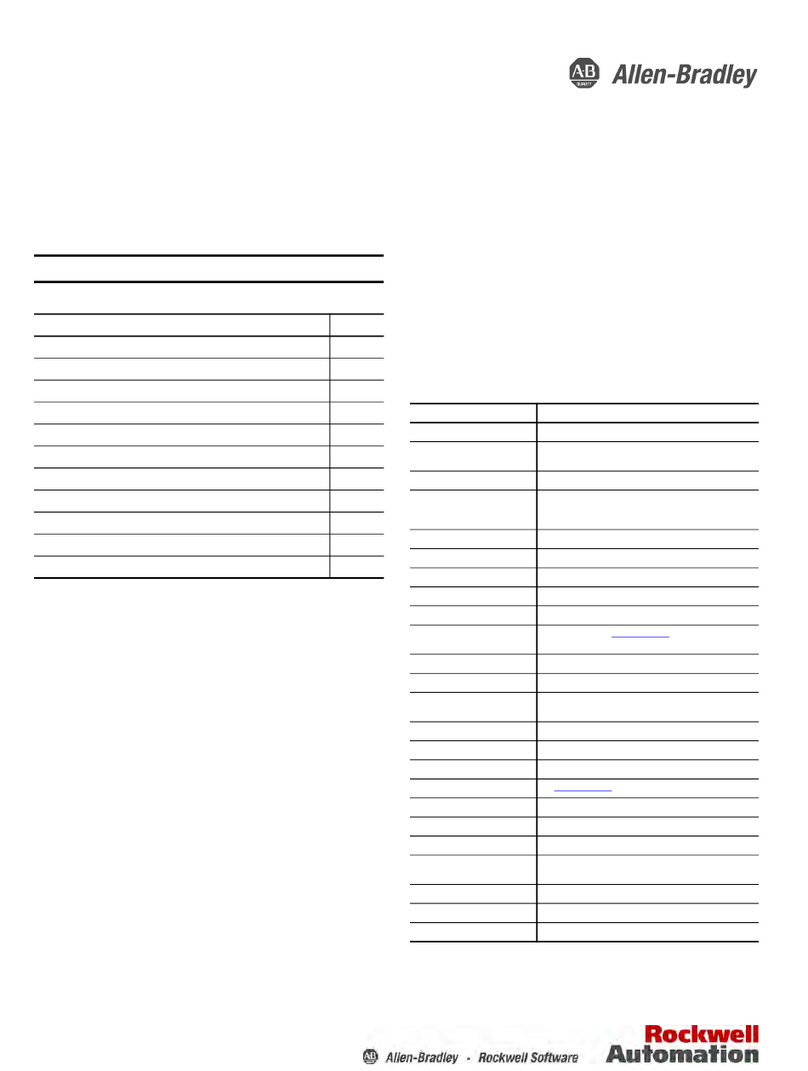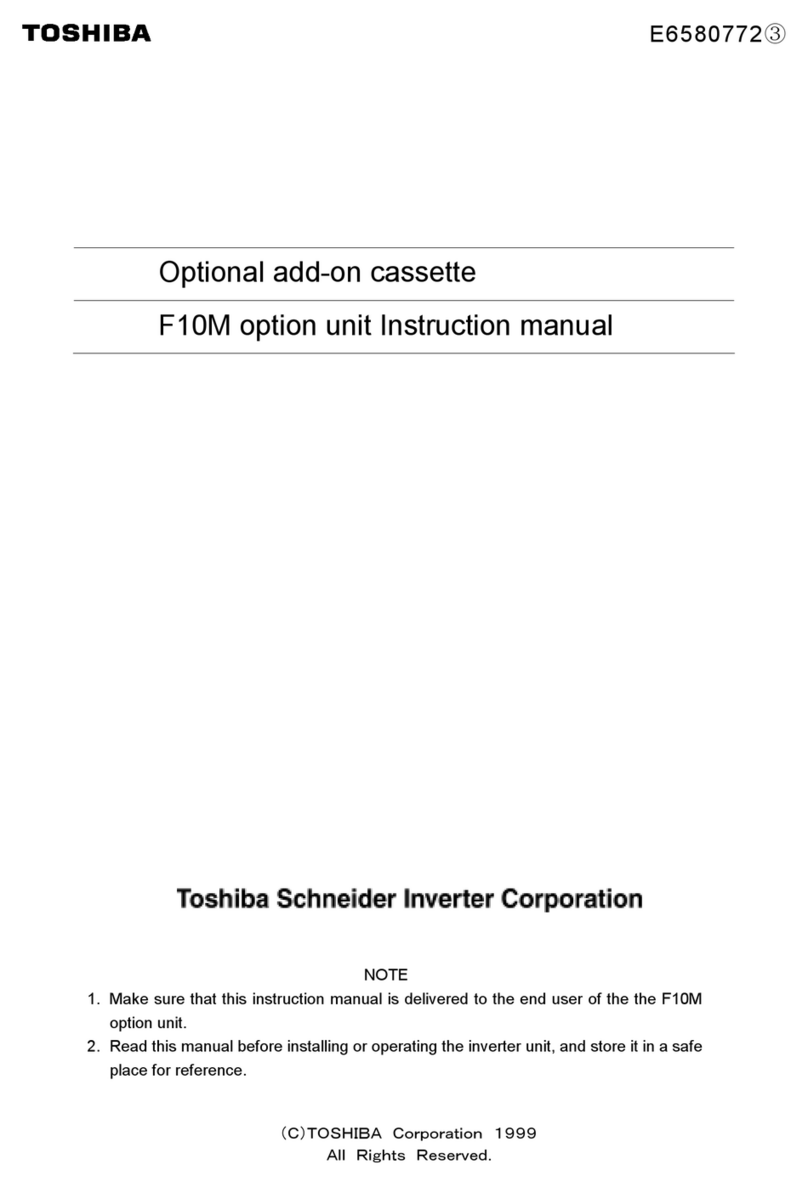Gram Precision INDICATOR SC2 User manual

1
USER MANUAL
MANUAL DE UTILIZACION
MANUEL D´UTILISATION
INDICATOR SC2
INDICADOR SC2
INDICATEUR SC2
REV. 2A11M103T

2

3
INDEX
Specifications
5
Power
5
Before using
5
System power consumption
5
Connect the loadcell to the indicator
5
Display description
6
Basic function operation
7
Standard functions setup
8
- Internal value / battery voltage
8
- Piece weight auto-average
8
- Auto-power off
9
- Backlight setting
9
- Accumulation
9
- RS-232 output
10
- A/D update rate
10
- Display condition at zero
10
Standard calibration
11
- Weight calibration
11
- Zero calibration
11
- Span calibration
11
Guarantee
12
EC Declaration of Conformity
29
INDICE
Especificaciones
13
Alimentación
13
Antes de su utilización
13
Consumo
13
Conexión de la célula de carga al indicador
14
Descripción del display
14
Operación básica
15
Configuración de funciones standard
16
- Valor interno / Voltaje de la batería
16
- Promedio automático del peso unitario
16
- Autodesconexión automática
17
- Iluminación del display
17
- Acumulación
17
- Salida RS-232
18
- Velocidad del convertidor analógico digital (A/D)
18
- Condiciones del cero del display
19
Calibración standard
19

4
- Calibración de peso
19
- Calibración del cero
19
- Calibración del span
20
Garantía
20
Declaración CE de Conformidad
29
SOMMAIRE
Caractéristiques
21
Alimentation
21
Avant d´utilisation
21
Consommation
21
Conexión de la cellule de charge a l´indicateur
22
Description de l´écran
22
Fonctions de base
23
Configuration des fonctions standard
24
- Valeur interne / Voltage de la batterie
24
- Moyenne automatique du poids unitaire
25
- Déconnexion automatique
25
- Éclairage de l´écran
25
- Accumulation
26
- Sortie RS-232
26
- Vitesse du convertisseur analogique digital (A/D)
26
- Remise à zéro de l´écran
27
Calibrage standard
27
- Calibrage de poids
27
- Calibrage du zéro
28
- Calibrage du span
28
Garantie
28
Declaration CE de Conformité
29

5
SPECIFICATIONS
Accuracy: Class III
Loadcell sensitivity range: 1.5
~
3.0mV/V
Nonlinear: ≤0.01%F.S
System working voltage: DC:5V
Division value: 1/2/5 auto setting
Large LCD display connector: Sampling serial output way
Sample rate: 20 times per second (can select)
Internal resolution: 300000
~
600000
POWER
Input: 120
~
240V
Output: 12
V/
1A
Rechargeable battery: 6
V/
4AH
BEFORE USING
1) Place this product on a firm and smooth place, don´t place it in vibration or
shaking, use bench for use on four only adjust foot, adjust the balance using the
bubble level.
2) Use independent source, avoid other electrical disturbance.
3) Don´t put any object on the platter when turn on the balance.
4) Please, turn on 2-3 minutes before using.
5) Avoid temperature change too large and air flow strenuous sites.
6) Don´t overload the balance, don´t exceed the maximal capacity.
SYSTEM POWER CONSUMPTION
Main system power consumption: about 25mA
Main system power consumption (with backlight): about 44mA
Main system power consumption (with backlight and RS-232): about 52mA
Battery life: about 160 hours (backlight off)
about 90 hours (backlight on)
CONNECT THE LOADCELL TO THE INDICATOR
1) The loadcell connector is 5 pins.
2) When the indicator in power, it is forbidden that take off the loadcell plug, if take
off the plug, the indicator maybe be damaged.
3) It is forbidden that weld the indicator, when there is thunder storm, please make
solution for avoiding the thunder, in this way, it can protect the safe of scales and
stuff.

6
PIN 1:E+ (EXC+) PIN 2:E- (EXC-) PIN 3:S+ (SIG+)
PIN 4:S- (SIG-) PIN 5:Ground
DISPLAY DESCRIPTION

7
BASIC FUNCTION OPERATION
Press and hold this key for 2 seconds to turn off the balance.
Press this key to turn on the balance
To select the desired weight unit.
To reset the weight to zero “0”, but the display value has to be lesser
than
±
2% of maximum capacity.
Function 1. To subtract the container´s weight. Maximum tare: full capacity
Function 2. To preset a tare value. Press this key with empty pan and use
the numerical keys to introduce the desired preset tare weight value, press
again this key to confirm.
To clear the preset tare value, press this key when do not place any object
onto the pan.
To setup the unit weight.
Place the object onto the pan, use 0 – 9 keys and decimal (.) key to input
the piece weight value, then press this key to confirm. The weight window
will show the total weight, the piece weight window will show the piece
weight and the total count window will display the total of pieces.
To setup the sample quantity.
Use 0 – 9 keys to introduce the desired sample quantity, then press this
key to confirm. Weight window will show the weight, piece window will
show the unit weight and the total count window the total of pieces.
To fix a quantity high limit.
Example: Put on the pan the quantity sample, for example 100 units, press
the to confirm and then press the key to fix the limit. Remove
the items from the platter, from now, the balance will beep when the
quantity of pieces placed on the platter arrives to 100pcs.
To accumulate weights and total count, the max accumulation count can
accumulated 99 times
Accumulation function can auto setup, see UF-5 function specification.

8
Piece weight memory key.
Input piece weight using the 0 – 9 keys, then press this key to memorize
and press the keep where you want to save it, for exemple:
Press this key to select the PLU (M01 – M09) and press again to select the
PLU (M11 – M18)
Press this key to clear the piece weight window.
Press this key to display the total accumulation count, total accumulated
weight and total count.
To clear accumulation data, press and hold this key until buzzer beeps
twice.
STANDARD FUNCTIONS SETUP
To access to functions setting, press and hold the key, then press the
The weight window will show UF-1, press the key or key to select the
desired parameter (UF-1 to UF-8)
UF-1 Internal value / battery voltage
1. Press the key to enter.
2. Weight window will show the internal value (SPAN), piece weight window will show
the actual battery voltage and the total count window will display the the internal
value (ZERO).
2. Press the key to exit.
UF-2 Piece weight auto-average
1. Press the key to enter.
2. The display will show the message A A U G 1 (factory default).
3. Use 0 and 1 keys to enable or disable the auto-average function.
4. Press the key to confirm.
5. Press the key to exit.

9
AAUG 0 : Disable
AAUG 1: Enable
UF-3 Auto-power off
1. Press the key to enter.
2. Use the 0 – 9 keys to enter the auto power-off time.
3. Press the key to confirm.
4. Press the key to exit.
Factory default: 00
UF-4 Backlight setting
Modes:
- Lit 0: Automatic
- Lit 1: Backlight on
- Lit 2: Backlight off
1. Use 0 – 2 keys to select backlight mode.
2. Press the to confirm.
3. Press the to exit.
Factory default: Lit 0 – Automatic
UF-5 Accumulation
Modes:
ACCU 0 0
A B
A: 0---Stable required 1----Stable not required
B: 0---The weight has to return to zero to accept next accumulation
1---The weight does not have to return to zero to accept next accumulation
2—No tare weight to accept next accumulation
1. Use 0 – 2 keys to select the accumulation conditions.
2. Press the to confirm.
3. Press the to exit.

10
Factory default: ACCU 0 0
UF-6 RS-232 output
1. Use the 0 – 4 keys to enter RS-232 output formats.
2. Press the key to confirm:
232 0 0
A B
A: Baud rate setup
0: 1200 1: 2400 2: 4800 3: 9600 4: 19200
B: Output mode setup
0: RS-232 output disable 1: Manual output (formats 2)
UF-7 A/D update rate
1. Use the 0 -2 keys to enter ADC speed.
2. Press the key to confirm:
Speed 0: low speed
Speed 1: standard speed
Speed 2: Hight speed
3. Press the key to confirm.
4. Press the to exit.
Factory default: 0
UF-8 Display condition at zero
1. Use the 0 – 5 keys to enter.
2. Press the to confirm
ZP 1: 1 division not to display at zero
ZP 2: 2 division not to display at zero
ZP 3: 3 division not to display at zero
ZP 4: 4 division not to display at zero

11
ZP 5: 5 division not to display at zero
3. Press the to confirm
STANDARD CALIBRATION
1. Press and hold the key, then press the key.
2. Use the and keys to select ECF-1, ECF-2 or ECF-3
ECF-1 – Weight calibration
1. Press the to enter, display will show the internal value, press again the
key to calibration the zero weight after stable.
2. Use the 0 – 9 keys to enter the weight to be calibrated.
3. Place the required calibration weight on the platform.
4. Press the key to confirm.
5. The calibration procedure is completed.
6. Press the key to exit and return to previous setup mode.
ECF-2 – Zero calibration
1. Press the key to enter, display will show the internal value, press again the
Key to calibration the zero weight after stable.
2. Press the key to exit and return to previous setup mode.
ECF-3 – SPAN calibration
1. Press the key to enter.
2. Use 0 – 9 keys to enter the weight to be calibrated.
3. Place the required calibration weight on the platform.
4. Press the key to confirm.
5. The calibration procedure is completed.
6. Press the key to exit and return to previous setup mode.

12
GUARANTEE
This scale is guaranteed for one year from the delivery date. The guarantee covers
any fabrication defect of the material.
During this period GRAM PRECISION, covers the manpower and the spare parts
necessary for the reparation of the scale.
This guarantee does not cover the failures caused by an inappropriate use or
overcharge.
The guarantee does not cover the freight cost (transport) necessary to repair
the scale.

13
ESPECIFICACIONES
Precisión: Clase III
Rango de sensibilidad de la célula de carga: 1.5
~
3.0mV/V
Nonlinear: ≤0.01%F.S
Sistema de voltage: DC:5V
División: 1/2/5 auto-configurable
Conector del display LCD: Forma de salida en serie
Frecuencia de muestreo: 20 veces por Segundo (configurable)
Resolución interna: 300000
~
600000
ALIMENTACION
Entrada: 120
~
240V
Salida: 12
V/
1A
Batería recargable: 6
V/
4AH
ANTES DE UTILIZAR
1) Situar la balanza sobre una superficie firme y llana, no exponerla en ambientes
con vibraciones, nivelar la balanza utilizando el nivel de burbuja.
2) Utilizar una fuente electrica independiente, evitar perturbaciones electricas.
3) No colocar ningún objeto sobre la plataforma en el momento de poner en marcha
el indicador.
4) Por favour, permita que la balanza se precaliente durante 2-3 minutos antes de su
utilización.
5) Evitar cambios de temperatura muy bruscos y corrientes de aire.
6) No sobrecargar la balanza, nunca exceder la capacidad máxima.
CONSUMO
Consumo normal: aprox. 25mA
Consumo con la retroiluminación: aprox. 44mA
Consumo con la retroiluminación y salida RS-232: aprox. 52mA
Vida de la batería: aprox. 160 horas (Sin la retroiluminación)
90 horas (Con la retroiluminación)

14
CONEXION DE LA CELULA DE CARGA AL INDICADOR
1) El conector de la célula de carga es de 5 pins.
2) Cuando el indicador está trabajando, no quitar el tapón de la célula de carga, este
acto podría dañar el equipo.
PIN 1:E+ (EXC+) PIN 2:E- (EXC-) PIN 3:S+ (SIG+)
PIN 4:S- (SIG-) PIN 5:Ground
DESCRIPCION DEL DISPLAY

15
OPERACION BASICA
Mantener pulsada esta tecla durante 2 segundos para apagar el indicador.
Pulsar esta tecla para encender la balanza.
Para seleccionar la unidad de pesada deseada.
Para poner la lectura del display a cero “0”, el valor del display tiene que
ser menor al
±
2% de la capacidad máxima.
Función 1. Para sustraer el peso de un recipiente. Rango máximo de Tara:
100%
Función 2. Para predeterminar el valor de una Tara.
Pulsar esta tecla con el plato vacío y utilizar las teclas numéricas 0 al 9
para introducir el valor de la tara deseado. Pulsar nuevamente esta tecla
para confirmar.
Para borrar un valor de tara prefijado, con el plato vacío pulsar la tecla
Introducción del peso unitario.
Colocar sobre el plato de pesada el objeto, utilizar las teclas numéricas del
0 al 9 y el punto decimal (.) para introducir el valor del peso unitario de la
pieza. Pulsar esta tecla para confirmar.
El display Peso mostrará el peso total de las piezas, el display Peso Unit
mostrará el peso unitario de cada pieza y el display Piezas visualizará el
número total de piezas.
Introducción del número de piezas (muestra inicial)
Utilizar las teclas numéricas del 0 al 9 para introducir el número de piezas
en la muestra inicial. Pulsar esta tecla, el display Peso mostrará el peso
total de todas ellas, el display Peso Unit. Visualizará el peso unitario y el
display Piezas el número total.
Para fijar una cantidad como límite superior.
Ejemplo: Colocar sobre el plato la cantidad de piezas como muestra inicial,
por ejemplo 100 unidades, pulsar la tecla para confirmar y
seguidamente la tecla para fijar la cantidad como límite. Retirar la
muestra del plato, a partir de este momento, la balanza emitirá una señal
acústica cuando la cantidad de piezas llegue a 100 unidades.

16
Acumulación de pesadas
Utilizar esta tecla para acumular pesadas ó resultados de cuentapiezas.
Se pueden realizar hasta 99 acumulaciones.
La función de acumulación puede ser configurada (ver parámetro UF-5)
Memorización de pesos unitarios.
Introducir el peso unitario de una pieza utilizando las teclas numéricas del
0 al 9, pulsar esta tecla y seguidamente elegir la tecla PLU donde se
desea guardar, por ejemplo:
Selección de PLU
Pulsar esta tecla para seleccionar una de las PLU (M01 – M09), pulsar de
nuevo la tecla para seleccionar una de las PLU (M11 – M18)
Pulsar esta tecla para borrar los datos del display Peso.
Para recuperar el valor de una acumulación, pulsar esta tecla.
Para borrar datos de acumulación, mantener pulsada esta tecla hasta que
la señal acústica suene dos veces.
CONFIGURACION DE FUNCIONES STANDARD
Para poder acceder a la configuración de funciones, mantener pulsada la tecla
y seguidamente pulsar la tecla
El display Peso mostrará UF-1, pulsar las teclas ó para seleccionar el
parámetro deseado (del UF-1 al UF-8)
UF-1 Valor interno / Voltaje de la batería
1. Pulsar la tecla para acceder al parámetro.
2. El display Peso mostrará el valor interno (SPAN), el display Peso Unit. Mostrará el
voltaje actual de la batería y el display Piezas visualizará el valor interno (CERO)
3. Pulsar la tecla para salir.
UF-2 Promedio automático del peso unitario
1. Pulsar la tecla para acceder al parámetro.
2. El display mostrará A A U G 1 (valor por defecto).

17
3. Utilizar las teclas 0 y 1 para activar ó desactivar la función.
4. Pulsar la tecla para confirmar.
5. Pulsar la tecla para salir.
AAUG 0 : Función desactivada.
AAUG 1: Función activada.
UF-3 Autodesconexión automática
1. Pulsar la tecla para acceder al parámetro.
2. Utilizar las teclas 0 – 9 para seleccionar el tiempo de autodesconexión deseado.
3. Pulsar la tecla para confirmar.
4. Pulsar la tecla para salir.
Valor por defecto: 00
UF-4 Iluminación del display
Modos:
- Lit 0: Automático
- Lit 1: Siempre encendido
- Lit 2: Siempre apagado
1. Utilizar las teclas 0 – 2 para seleccionar el modo deseado
2. Pulsar la tecla para confirmar.
3. Pulsar la tecla para salir.
Valor por defecto: Lit 0 – Automático
UF-5 Acumulación
Modos:
ACCU 0 0
A B
A: 0---Se requiere estabilidad 1----No se requiere estabilidad
B: 0---El peso debe de volver a cero para aceptar una nueva acumulación.

18
1---El peso no debe volver a cero para aceptar una nueva acumulación.
2—Ninguna tara para aceptar una nueva acumulación.
1. Utilizar las teclas 0 – 2 para seleccionar las condiciones de acumulación deseadas.
2. Pulsar la tecla para confirmar
3. Pulsar la tecla para salir.
Valor por defecto: ACCU 0 0
UF-6 Salida RS-232
1. Utilizar las teclas 0 – 4 para acceder a la configuración de formatos.
2. Pulsar la tecla para confirmar:
232 0 0
A B
A: Configuración de la velocidad de transmisión
0: 1200 1: 2400 2: 4800 3: 9600 4: 19200
B: Configuración del modo de salida
0: RS-232 salida desactivada 1: Salida manual (2 formatos)
UF-7 Velocidad del convertidor analógico digital (A/D)
Modos:
Velocidad 0: baja
Velocidad 1: media
Velocidad 2: alta
1. Utilizar las teclas 0 -2 para acceder al parámetro.
2. Pulsar la tecla para confirmar:
3. Pulsar la tecla para salir.
Valor por defecto: 0

19
UF-8 Condiciones del cero del display
Modos:
ZP 1: 1 division no se muestra
ZP 2: 2 divisiones no se muestran
ZP 3: 3 divisiones no se muestran
ZP 4: 4 divisiones no se muestran
ZP 5: 5 divisiones no se muestran
1. Utilizar las teclas 0 – 5 para acceder.
2. Pulsar la tecla para confirmar
3. Pulsar la tecla para salir.
CALIBRACION STANDARD
1. Mantener pulsada la tecla y sin soltarla, pulsar la tecla
2. Utilizar las teclas y para seleccionar ECF-1, ECF-2 o ECF-3
ECF-1 – Calibración de peso
1. Pulsar la tecla , el display mostrará el valor interno, pulsar nuevamente la
tecla
2. Utilizar las teclas numéricas 0 – 9 para introducir el valor de la pesa de calibración.
3. Colocar la pesa de calibración en el centro de la plataforma.
4. Pulsar la tecla para confirmar.
5. El procedimiento de calibración ha sido completado.
6. Pulsar la tecla para salir y volver al modo de configuración previo.
ECF-2 – Calibración del cero
1. Pulsar la tecla , el display mostrará el valor interno, pulsar de nuevo la tecla
2. Pulsar la tecla para salir y volver al modo de configuración previo.

20
ECF-3 – Calibración del SPAN
1. Pulsar la tecla .
2. Utilizar las teclas 0 – 9 para introducir el valor de la pesa de calibración.
3. Colocar la pesa de calibración en el centro de la plataforma.
4. Pulsar la tecla para confirmar.
5. El procedimiento de calibración ha sido completado.
6. Pulsar la tecla para salir y volver al modo de configuración previo.
GARANTIA
Esta balanza está garantizada contra todo defecto de fabricación y de material, por un
periodo de 1 año a partir de la fecha de entrega.
Durante este periodo, GRAM PRECISION, se hará cargo de la reparación de la
balanza.
Esta garantía no incluye los daños ocasionados por uso indebido o sobrecargas.
La garantía no cubre los gastos de envío (portes) necesarios para la reparación
de la balanza.
Table of contents
Languages:
Other Gram Precision Accessories manuals
Popular Accessories manuals by other brands
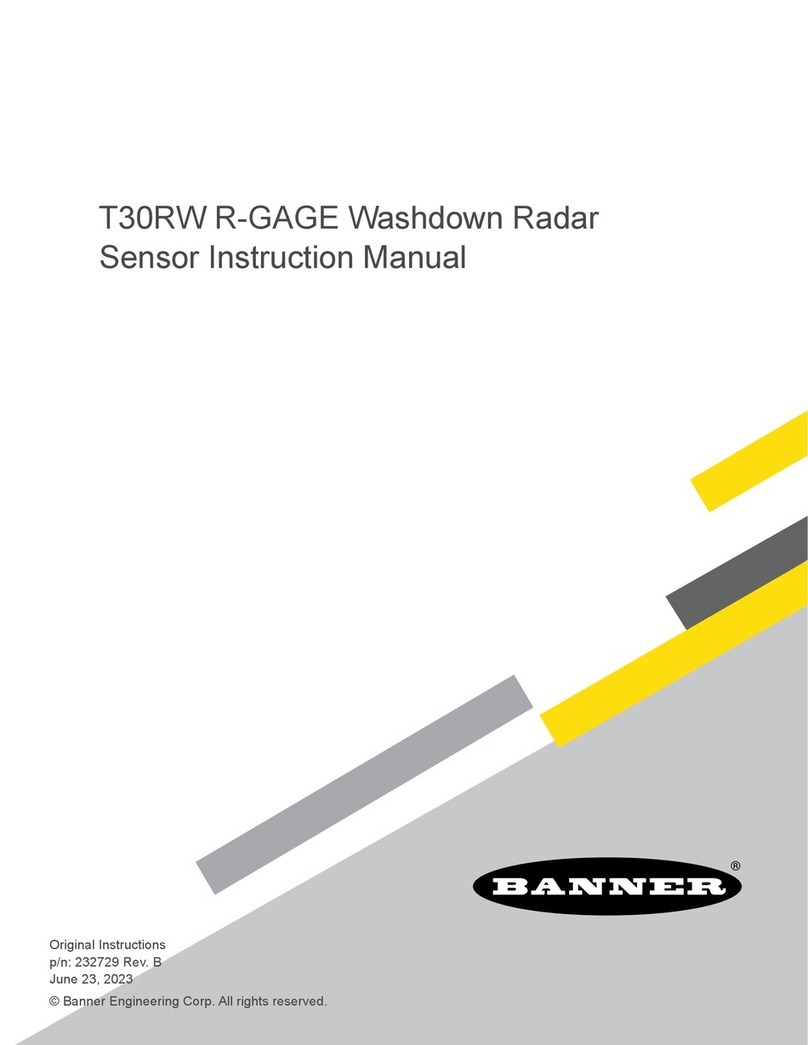
Banner
Banner T30RW instruction manual
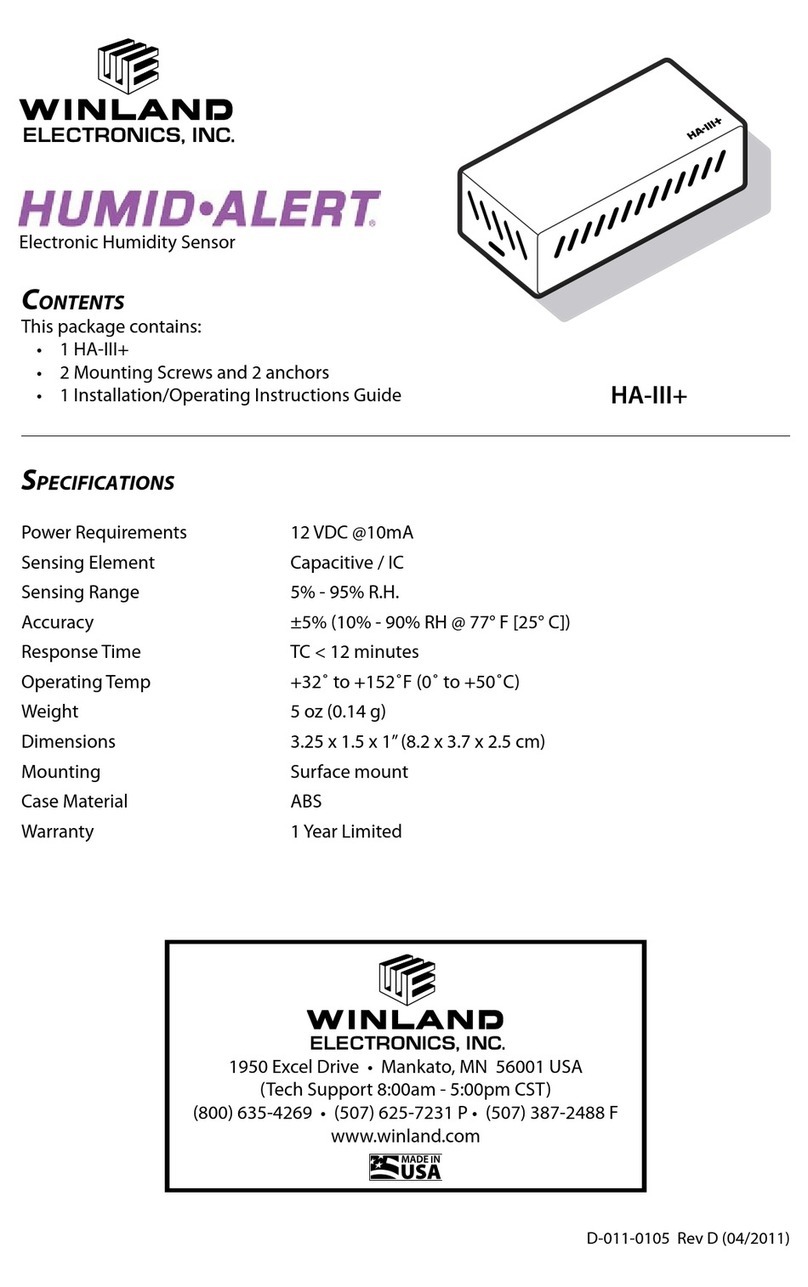
Winland Electronics
Winland Electronics HUMID-ALERT HA-III+ quick start guide

Panasonic
Panasonic KX-HNS101 installation guide

Best
Best BestReach BRR46030 Operation, maintenance and parts manual

OPTEX FA
OPTEX FA FASTUS TOF-DL250 Series instruction manual
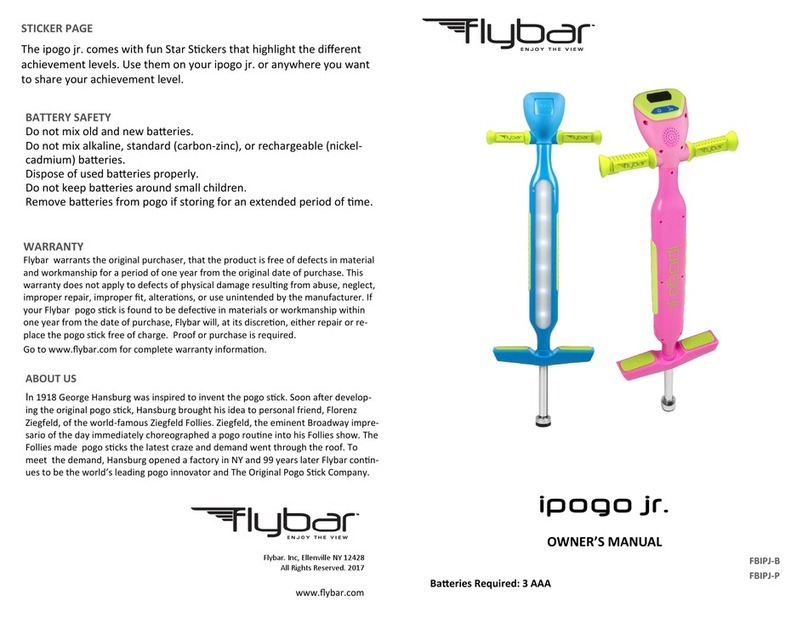
Flybar
Flybar ipogo jr. owner's manual

